Gothic Punk & Personal Horror: World vs Chronicles
May 6, 2016 by crew
White Wolf’s two gamelines, The World of Darkness and Chronicles of Darkness, share many similar features. Both are worlds, not unlike our own, but both have a darker, seedier, and more mysterious and occult underbelly.
In the shadows, hidden from human society, the monsters of the world engage in their own battles and Machiavellian schemes. However, while on the surface the two game lines are similar, they differ both in terms of rules and tone.
The World of Darkness (Old)
The World of Darkness runs on a rather simple, and much copied mechanic, which forms the core of the Storyteller System. Characters are built around Attributes, Skills, Merits and Flaws, and the relevant morality trait, supernatural power stat, and of course, the supernatural powers they can have.
Attributes fall into three classes; Physical, Social, and Mental. These are also subdivided into three types which relate to Power, Finesse, and Resilience (though this is not explicitly mentioned). Physical attributes consists of Strength, Dexterity and Stamina. Social attributes are Appearance, Charisma and Manipulation. Mental attributes are Intelligence, Wits and Perception.
In a similar manner skills, representing abilities that must be learnt, such as Firearms, Computers, and Empathy, fall into three categories, which are Social, Physical and Mental. Typically, characters have a rating in an attribute or skill that ranges from zero to five. This represents the number of D10 dice used when that skill or attribute is used.
Depending on the attribute check, or skill check, a dice pool is formed by adding together the ratings of the attributes, or attributes and skills, used for the test. For example, firing a gun requires the use of Dexterity and Firearms. If the former has a rating of two, and the latter of three, you would roll five dice in total.
The difficulty of the roll depends on situational factors and the equipment used, and the degree of success is determined by how many dice roll equal to or above the difficulty for the test. Nearly every test works in this manner. Supernatural abilities may require you to roll a combination of an attribute and the power stat, or the rating of a merit could be added to a dice pool.
On top of this, supernatural creatures have a power pool, which is just a pool of points that can be spent to activate powers and abilities, and can be replenished in a number of ways, along with a Willpower stat and pool, with this pool likewise being used to enhance dice rolls and replenished by acting in character. In this way, the system is rather flexible for situations that cannot be described in the rulebooks.
Oh The Humanity!
An important system to note, is the Humanity system. It was unique to Vampire the Masquerade in the World of Darkness. The Humanity system was a measure of a vampire’s morality, and a gauge of how Human they acted, while also a way of determining just how much of a monster they were. It ran on a scale from 0 to 10, where 7 was considered the baseline for a normal Human.
When a vampire commits an act of violence, a crime, or murder, their Humanity rating first determines if they care. If they do, it can then be determined if they degenerate further as a result, and thus become more disconnected from the world, gradually turning into even more of a monster who cares less and less about Human ideas of good and evil.
Of course, as a vampire became less Human, there was a chance that a degeneration in Humanity could lead to the vampire gaining a derangement and becoming mad in some way.
Now, it is perhaps important to note here that while the system, at the time, was ground-breaking, as it asked the player if their character was acting in a way that was morally dubious - it now mattered if that thug you fought was merely beaten or killed - the system was considered to be very Victorian - the notion that committing acts of violence, crimes, and murder, are what leads to a person developing some form of mental health issue.
The Tone Of The World
In terms of the tone and mood of the setting, the whole atmosphere of the World of Darkness was often described as “Gothic Punk”. The world was much like our own, but crime rates were higher, people were more morally corrupt, the governments and countries were more dystopian in nature, and the cities themselves were dirtier and more imposing.
Cyclopean glass and steel towers overlooked cities that were punctuated with faux gothic buildings and churches festooned with glaring gargoyles.
Gothic Punk also means other things. Gothic means seeing the beauty in the decay of our world, finding the romance in death, and the damning fascination of occult mysteries that lead to darker, more horrific revelations.
Punk in this context refers to the feeling of aggression against the powers that be - be it the corrupt city mayor, the elder vampires, or the eldritch gods that lurk in the shadows - punk is that desire to fight, and about the extreme reactions people have to the world.
The image of the leather jacket wearing vampire gang-banger in many ways encapsulates the very idea of Gothic Punk, as does the millennial fervor that pervades the setting.
As a game that was mainly produced in the 90s, the games reflected all of the fear of the new millennium, the numerous doomsday prophecies regarding the year 2012, and the anxiety surrounding world wars, climate change, and technology, with an overarching metaplot that was slowly pushing every game line to their own end of the world scenario.
This meant that, as players, there was both a sense of the need to rebel, to fight back against the coming apocalypse, and also the need to feel like some difference could be made before the world ended.
Coupling this mood with the feeling of being crushed under foot by the elders of your society and the awakening of ancient evils, the setting was one where there was little hope for the future, just a hope to survive long enough to perhaps escape the oncoming apocalypse, or even the hope of having some input into how the world would end.
The Chronicles of Darkness (New)
The Chronicles of Darkness makes use of a game system that is an evolution of the previous Storyteller System, hence the name for it is the Storytelling system. Much like the older system, attributes and skills are divided into Physical, Social and Mental categories, but the sub-division of attributes into Power, Finesse, and Resilience is made more clear.
This is important because spirits (which includes ghosts, animistic spirits, demons and other ephemeral beings) lack attributes, but have ratings of just Power, Finesse and Resilience. Again these stats for Humans and playable supernatural creatures range from one to five, with supernatural creatures having a power stat and power pool, along with a Willpower stat and pool.
Unlike World of Darkness, all the supernatural creatures that are playable have some form of a mortality trait, analogous to that used in Vampire the Masquerade. For Humans this is called Integrity, and is now not a measure of how “good” a person is, but is instead a measure of how a person will react to stressful and horrific situations.
Thus when a Human commits murder we are seeing if they have the psychological capacity to deal with the traumatic experience of knowing they have ended a person’s life. Likewise, when faced with supernatural terrors, Integrity is also a measure of how a character copes with the maddening things that they witness.
Of course, some characters should be more psychologically resilient to seeing death, murder, or monsters, and this is represented by modifying what conditions for psychological stress are considered “Breaking Points”. A homicide detective and a high school kid have very different life experiences. Breaking points are thus things the player and storyteller come up with together for a character.
Other games within the Chronicles of Darkness modify this system. Vampire the Requiem has a Humanity rating, which is more a measure of how human they act. Werewolves have Harmony, a measure of the balance between their human side, and their wolf spirit. Mages have Hubris, which measures their attitude to the world around them and if they see themselves above it all given the power that they command.
Finally, Chronicles of Darkness differs system wise thanks to the Condition system. Conditions are short and long term ways characters are hindered or helped. They are bonuses and penalties to dice pool rolls and, most critically, they are essential to how characters gain experience points.
When a Condition is resolved, a character receives a beat. 5 beats equals a single experience point. Resolving Conditions means that a character must overcome the adverse effects that the Condition is inflicting, or sacrifice the benefit a Condition has allowed. For example the Condition “Lost” is gained as a character is forced to flee in the abandoned asylum.
They now either have to make a successful roll to find the right path and find their friends, or abandon their friends and try to leave the asylum. Doing either of those things resolves the Condition and gains them a beat.
Beats are also gained through taking damage in the last few health boxes, choosing to turn a failed action roll into a critical failure, or causing a situation that invokes a breaking point.
Thus the way experience points are gained is through engaging in the story, the danger and drama, and that often means not doing the best thing for your character - but is of course something that generates plenty of exciting and dramatic action.
Fight!
In the World of Darkness, initiative is rolled in every round. Then whoever has the lowest initiative declares their action, all the way up to the person with the highest initiative.
Actions are then resolved in Initiative order, from highest to lowest. At any time, you can abandon your action to perform a 'reflexive' action, such as dodging an attack or the like, but this often meant that the person with the highest initiative got to dictate how combat proceeded.
The standard combat attack action was similarly complex. First you rolled to hit, then your target could choose to dodge, then you rolled damage and your target rolled to soak the damage. That may not seem too bad, but when supernatural powers are at play, it can slow things right down.
There are a number of powers; Celerity for Vampire, Rage for Werewolf, and a variety of spells for Mages, that will give you multiple attacks per turn (you can do this non-supernaturally, but you will incur compounding penalties). If you have a large supernatural power score then you can have a decent Celerity or Rage score as a starting character, so you’ll often find players who can attack 2-3 times a turn from the get go.
A number of combat powers can also be activated and will stay active for the duration of the combat scene. Vampires can activate their super strength (called Potence) which gives guaranteed successes and can make them very powerful in a fight and again, this is something that beginner characters can have access to.
For many, this is a feature, not a bug, playing characters who can mop the floor with non supernatural adversaries can certainly be a rush - and can make for a quick scene - but when they are up against adversaries who have access to a similar array of supernatural abilities the pace and tempo of the combat scene can slow down considerably.
Contrast that with the Chronicles of Darkness’ system, which opted for a simplified system and fast resolution. As a combat action, you make one roll. Once initiative rolls have been determined and the combat action of each character is taking has been noted, the initiative order is determined.
Characters with a higher initiative can attack first or delay their action to later in the combat round, or even until the next combat round when they can then act anytime they wish.
For attacks, players establish an initial dice pool - again Attribute + Skill + equipment modifiers, then subtract dice for mitigating circumstances (environment/hard target to hit/Tilts) and roll that final dice pool.
Rather than roll for defence, either the static defence stat of the target character is removed from the attack dice pool, or if they have chosen to dodge - and thus sacrificed their combat action that turn - they roll a dice pool equal to double their defence stat and the result of that roll is removed from the attacker’s dice pool. If the attacker gets any successes, then a hit is scored and the number of successes is the damage inflicted.
Weapons, so long as they hit, also give you a number of bonus successes of damage to apply (It is important to note that while similar, the combat system of Chronicles of Darkness 1st ed is slightly different with how weapon damage modifiers are applied to attacking dice pools).
Many of the supernatural abilities were dialed down in power scale (most supernatural combat powers require power expenditure per use as opposed to WoD, which just needed expenditure to activate it for the scene) and players had to be much more judicious in their usage.
This lack of granularity turned off a large group of the WoD fanbase, but those who played it saw combat scenes that had often taken up a large chunk of their gaming session now take considerably less time, allowing them more playtime to move the story forward and roleplay.
What is also different is that when a combat scene begins the players should decide on the intent of the scene. Is it that they wish to escape? Are they defending someone? Are they simply in a murderous rage and want their long time rival dead? Much like Conditions, combat can involve “Tilts”, things that swing the fight one way of the other. One of these Tilts is “Beaten Down”.
This simply means that if characters take damage equal to or greater than their Stamina rating, then they must expend Willpower points to continue fighting each round. Alternatively the character can surrender. This is of course only possible if surrender is an option in such a fight.
If the monster attacking is mindless and wants only death and destruction, the desire to survive overrides this Tilt and it has no effect. But it does mean this Tilt is useful in making combats resolve quickly where death and survival are not the only outcomes.
It is perhaps important at this point to end on the note that all Chronicles of Darkness games have a process of character creation that revolves around creating the human character first (though in some instances this is slightly different if you play Promethean or Demon).
Once that character is created, you then apply the modifications, the “supernatural template”, that makes the character into the supernatural creature you are to play as.
The Tone of Chronicles
In terms of tone and mood, the games Chronicles of Darkness are first and foremost games that stress personal horror. Many of the dangers that you face are dangers to the society and world local to where your game is set. The victims of monsters are not the faceless masses, but the friends and family of your character.
While a few secret societies do span the globe, many supernatural groups are confined to the city or geographic region they hail from. So while the Carthians rule the vampire society in Bristol and New York, they only share the name, and can be very different in terms of politics and beliefs, to the extent that they could be enemies.
Ultimately, it means that while there can be world spanning dangers, most characters are involved in stories where they are dealing with the night to night adversity that plagues them in their own backyard. It matters little what is going on in Australia to the werewolf in the wilds of Cumbria.
But that does not mean that a vile spirit cannot roam the world causing death and destruction and arrive in your home town to repeat it all again.
Comparatively to the World of Darkness, the world of Chronicles of Darkness is what you make it, meaning that by default there is no end of the world scenario that the setting is approaching - but of course you could create one, or many (Buffy after all faced the end of the world on a near seasonal basis).
It then means the setting of Chronicles of Darkness is less about the fight to survive against some existential threat, but is more focused on the darkness that exists within the soul of each character.
Chris Handley, Matt Bresee and Pete Mars
If the classic World of Darkness setting has taken your fancy, then check out the Midnight Express podcast from Darker Days Radio co-hosted by Pete Mars.
If, instead, you feel yourself pulled towards the new world of Chronicles then head over to Darker Days Radio's Network Zero podcast, hosted by Chris Handley.
"Both are worlds, not unlike our own, but both have a darker, seedier, and more mysterious and occult underbelly."
Supported by (Turn Off)
Supported by (Turn Off)
Supported by (Turn Off)









































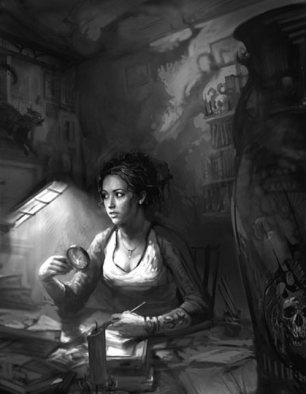
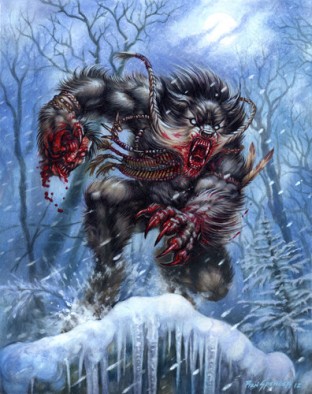
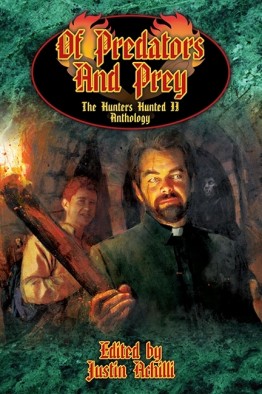
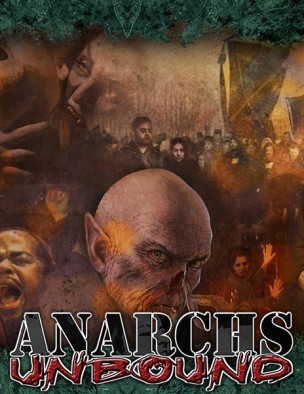
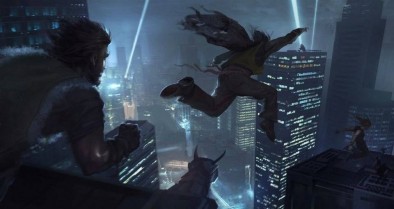
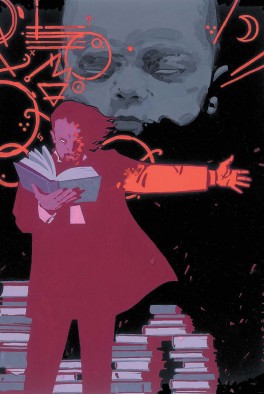

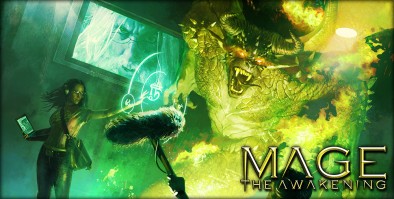
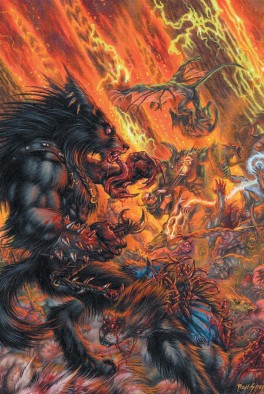
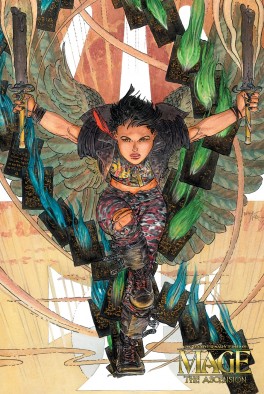
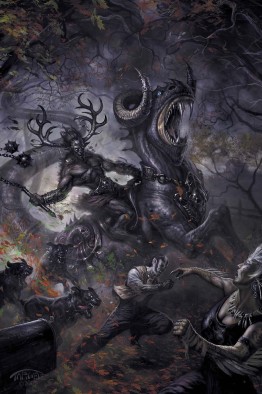
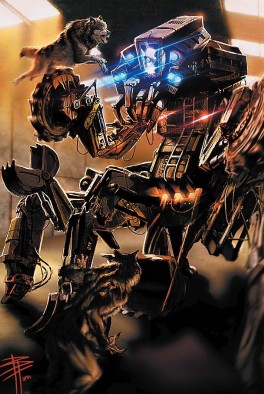
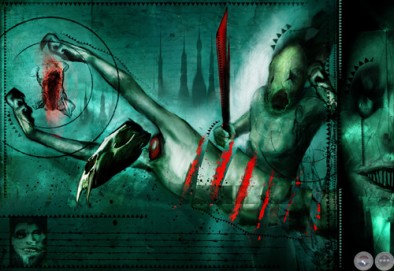
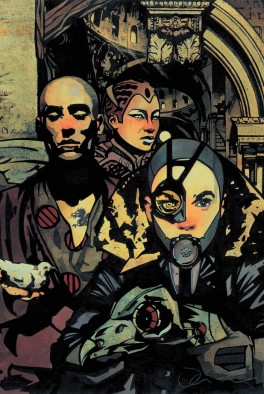


































I’m old enough to have been a veteran roleplayer when V:tM was released, and at the time its emphasis on storytelling and roleplaying with mechanics to enforce them seemed a like a massive step forward from where the hobby was in the 80s (with respect to the likes of Ars Magica). It hasn’t stood the test of time very well, and I did think WW did a pretty good job of improving on them when they got the chance to reboot with nWoD/CoD. The problem was that by then, rpgs, especially outside of the mainstream, were really pushing the envelope… Read more »
I grew up playing Werewolf The Apocalypse and Vampire The Masquerade. Had a lot of fun in both of them but the world of Werewolf was the one that truly caught me – loved it to bits and you felt like a wrecking machine – Gaia’s champions! Vampire was neat too but in our teenage years we just liked smashing stuff. The new World of Darkness has become our deduction and sleuthing style mystery solving game nowadays – even in Werewolf, as we got tired of just smashing things all of the time. That being said I feel like WoD… Read more »
You should really look into Forsaken. The 2nd ed does a lot of good things, and removes teh racial issues surrounding the Apocalypse tribes.
In hindsight it was really weird for WW to reinvent the wheel every time they created a new supernatural theme. The system itself never quite seemed to match the intent. To me this is one of the reasons why the OSR movement managed to breath life back into D&D style systems while ‘storytelling’ didn’t survive. OTOH … the need for (some) people to want to combine all of the supernatural entities into a single world was equally weird, because every single one of them required really large cities/regions to be viable. It’s a bit like the search for intelligent life… Read more »
Woah! another @doctorether article 😀
Get in here so you can link your podcast and get some thumbs up!
Thanks for this post. I more or less stopped roleplaying around the time of the switch from World of Darkness (mainly Vampire in live action games, most commonly Werewolf or Vampire in tabletop games) to the new setting, but that was for a mixture of reasons. I had nothing invested in the new system and as I had other things going on in my life at the time it was easy not to get into it. I had some amazing times in the old setting so it’s not a surprise that the new didn’t seem as interesting. That said, even… Read more »
Well the beauty of the 2nd ed books for Chronicles of Darkness is that they have compiled a lot of the setting that got developed during 1st ed. So just the core book for Requiem, Forsaken or Awakening is enough.
I roleplay rarely now, and never GM anymore. The last time I did was about six or seven years ago and I used a stripped down version of the Primetime Adventures conflict resolution system as the only game mechanics (and that is pretty minimalist to begin with). At character creation I told the players the setting (which in this case was a 19th century horror novel setting), they had considerable leeway within that to come up with their character, and they’d need to seed lots of story and background into it whilst they were doing it. The only mechanics were… Read more »
looks interesting
I loved old World of Darkness and I do feel like 90% of roleplaying ‘advances’ since have been steps backwards into the 1970s (or too abstract for me personally to work with). I could see all kinds of clever things they’d done in New World of Darkness to fix problems in the original, the problem is they just didn’t work. The system was more balanced, but forced and clunky, the odder quirks had been ironed out of the background but they took the spark of creativity with it. And if old WoD was spoiled by your players knowing too much,… Read more »